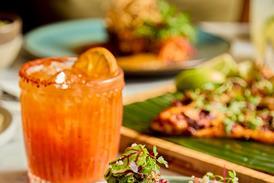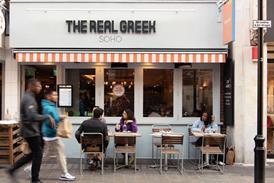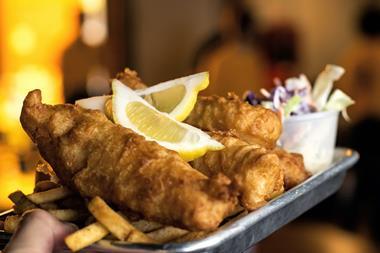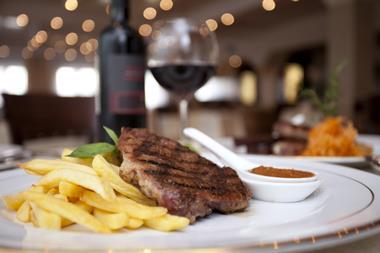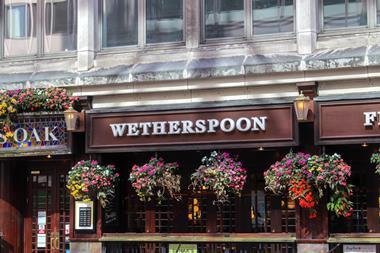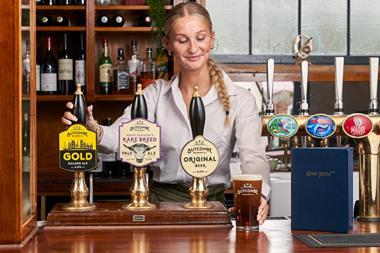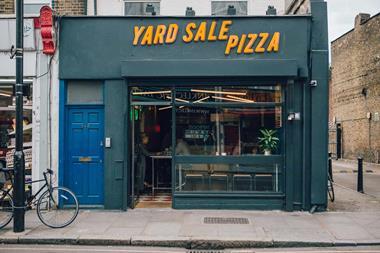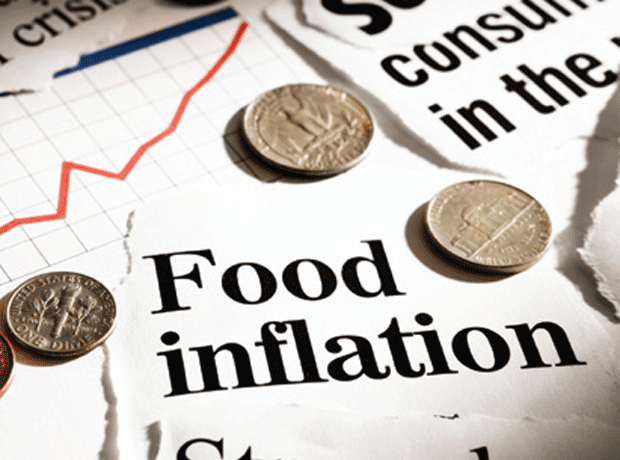Brand expert Ian Dunstall casts his eye over a segment over the market that is often overlooked in analysis despite being a financial power house – the value pub market. He rates the leading brands and looks at how many have reinvented themselves to better align with the modern consumer.
JD Wetherspoon excepted, the branded value pub market tends to be relatively under reported within the industry press – a factor of lower brand buzz, a non-millennial target market and limited individual investor reporting (most brands are hidden within the group reporting of major pub groups). But they represent significant market value. Wetherspoons alone is a £1.5bn giant and eight other scale brands within the broad categorisation of value pubs collectively represent another c£1.3bn annual sales.
| Outlets | |
|---|---|
|
Wetherspoon |
794 |
|
Hungry Horse |
294 |
|
Sizzling Pubs |
205 |
|
Harvester |
202 |
|
Brewers Fayre |
166 |
|
Toby |
162 |
|
Flaming Grill |
131 |
|
Table Table |
67 |
|
Farmhouse Inn |
63 |
What are the broad market characteristics of this segment? This is a category with high consumer ratings for value for money (VFM) and generosity. Brand awareness and familiarity are relatively high – there are some well-established and scale brands in the sector. Menu ranges tend to be relatively traditional (orientating around pub classics, grill and carvery). Promotion activity is high with daily events and offers to encourage frequency and return. And most strikingly, the brand appeal is to an older, slightly male orientated, lower socio-economic consumer base. For many of the brands, over 50% of meal occasions are from older customers age 50+. (source MCA pub brand monitor).
And these are pubs. With all the inherent strengths that offers compared to their restaurant counterparts –the informality and accessibility of a pub environment and the incremental (lower overhead) drinks sales opportunity.
This is a segment with some eye-wateringly low entry-level pricing, typically offering meals from £5 or £6 – pricing more typically associated with QSR. So, high-volume mass appeal is critical for profit potential. And especially with the current economic cost pressures, combined with the general competitor shift towards increased promotional value, a strong brand concept is essential to achieve a sustainable economic model at such low guest spend.
Let’s start by highlighting two of the stronger brand concepts in the segment.
Wetherspoons continues to dominate as a consumer champion, with strikingly high consideration and usage for all dayparts. It’s really a category of one, distinctive to the other brands in this review. At its heart it’s the drink occasion that creates the soul of the business and the core of its customer appeal. The brand works hard to maximise its relevance and appeal for a broad range of ancillary offers and occasions to maximise relevance for all dayparts. What impresses about Wetherspoons is the continual brand evolution to ensure mass-market accessibility to the current consumer trends at a value price positioning. Long established is the breadth of ale range and the regular drinks festivals, the daily ‘club meal deals’ and the importance of Wetherspoons as a major player in the high street breakfast and coffee segments. Currently pizza ovens are being rolled out across the estate – price points from £5.50 will put additional competitive pressure on the high street pizza casual dining brands. And the brand constantly ensures it is updated with the contemporary product trends – witness the current focus on the ‘gin palace’ range.
A brand that really impresses is Farmhouse Inns from Greene King – ‘feast together the farmhouse way’. The brand strength is not going unnoticed by consumers – Rooney Anand declared (MCA) the brand is averaging an impressive £58k AWT, and the MCA Pub Monitor clearly shows that the brand leads consumer preference within the pubs segment on NPS and every guest rating metric of experience, VFM, menu choice and food taste. What impressed me most was the strength and quality of the distinctive brand features, notably the range of carvery offers (small, medium, large and ultimate servings from £4.99 to £10.79) and the visual appeal of their iconic desserts offers – the ice cream parlour and the homemade cake station. The latter enabling a guest cake off/ bake off competition that neatly tunes into the popularity of home baking contests.
Second to Wetherspoons in terms of scale (turnover and outlets), is Hungry Horse, with recent growth from the consolidation of the lookalike brands within the acquired Spirit estate. This is a brand with many positives but does not seem to gain the strength of consumer ratings to maximise its potential? Over the years I found much to admire about the brand – I have nostalgic fondness for the early year boldness of its menu positioning and personality around big plate generosity. I have also admired the ‘Tardis’ capability of some of the larger venues to absorb all the local community under one roof with such clear zoning distinction – one of the most overtly child friendly pubs on one side and a proper community local sports entertainment bar on the other. Hungry Horse offers some exceptionally low-price points even in the context of the value pub segment – midweek 2 meals for £7.99, golden years 2 course lunch for £4.70, Monday steaks or Sunday roasts for £5. Now that Greene King has consolidated its brand portfolio to a select number of drive brands there may be more opportunity to drive the appeal and potential of Hungry Horse as a truly distinctive brand position.
Another brand that stands out for me, albeit I confess bias, is Toby Carvery. Way back in the mid 90’s I was involved in the brand re-focus of Toby Carvery to an Every Day Low Prices all-day volume brand. At that moment in time its future existence was in doubt – the original carvery concept had become diluted and many Toby’s had been converted to grills or ‘chameleons’ (grill by week, carvery by weekend) with relatively high and inaccessible carvery price premiumisation. Bass Taverns (now MAB) had recently purchased Harvester and were considering the consequent conversion of the underperforming Toby estate. We secured the brand future with a refocus on high VFM and an ‘accessible indulgence’ positioning, and consequently Toby Carvery, now ‘Home of the Roast’, prospered as other carvery concepts (remember Country Carvery?) faltered. Midweek carveries are still only £6.49 (lower priced than the McDonalds signature burger meal deals), and now they offer all you can eat breakfasts for only £4.49
Within the value sector however are several once significant brands that have lost their consumer dominance over time. Most noticeable is the relative obscurity of the once powerful Whitbread pub brands as their corporate focus has turned (with stunning success) to other sectors. I have been long enough in the industry to remember when Brewers Fayre was an industry power brand that other companies tried to imitate, with a strong market appeal to both the weekend family market and the midweek grey market. Whilst the brand is still of sufficient scale (166 pubs) to still be reasonably ranked in penetration league tables, Brewers Fayre has lost the brand distinction that it once enjoyed. It’s indicative of several brands in the value pub segment that offer easy local community accessibility to popular pub dishes at relatively good value for money, but lack stand out with any particular brand advantage.
Consolidation in the value pub segment is also in evidence in both Greene King and MAB as they reposition elements of their brand portfolio towards future drive brands.
There is still a very relevant market role for well positioned value pub brands. They tap into the heartland of the local community. They have particularly strong appeal to the ever growing over 50 market. They have the potential to develop all day relevance and appeal from breakfast through to late evening. They have the natural informality and accessibility, and drinks sales opportunity, of the pub environment. And as Wetherspoons so successfully demonstrates – there is the ongoing potential to democratise for the mass market customer appeal the ongoing emerging product trends in the market, offered at a value price positioning that enables relatively high visit frequency and broad market appeal.
The challenge for this segment is the ability to achieve all this profitably. Brands based on a freehold model have comparative advantage. And whilst mass market ‘every day’ affordability is critical to their relevance, building the brand appeal beyond low price is critical to long term brand success.
Ian Dunstall is a consultant in Brand Strategy, Insight & Development. Previous roles at Mitchells & Butler included Director of Marketing and Director of Concept Development. In his career he has supported over 40 brands with their positioning and development.














